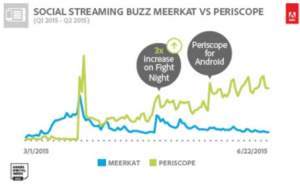How In-Game Advertising Will Become An Important Channel: Q&A With Viant’s Jon Schulz
With nearly 3 billion gamers worldwide, in-game advertising is becoming a valuable opportunity for marketers.
This emerging channel is believed to be in the billions, but which brands will find in-game ads most effective in reaching a particular audience? How have in-game ads changed over time and will they lead brands into the potential metaverse?
MediaPost talked with Jon Schulz, CMO of advertising software company and omnichannel platform Viant Technology, to discuss these questions and more.
MediaPost: Are advertisers viewing gaming as a serious channel?
Jon Schulz: I’d liken gaming to mobile 10 years ago or connected TV (CTV) three or four years ago in terms of the opportunity being much bigger than the utilization.
There’s a lot more time spent than actual investment being made in gaming because it’s still viewed as an “emerging” channel — it’s unproven, or too new. There’s more usage and engagement than advertising investment. Advertisers are still sticking their toe in the water.
MP: What in-game ad investments are you currently seeing?
Schulz: We’re seeing a lot of branding because the nature of the advertisements. Say you’re playing a sports game and you’re in a stadium of some kind. A stadium is nothing but out-of-home advertising; everywhere you look there’s a logo or a billboard.
It’s what we’re used to seeing, so it feels natural to see the same thing in a sports game. We also see a lot of consumer-packaged goods products like Mountain Dew and Doritos –– brands with high name recognition that are trying to build frequency.
MP: Have in-game ads become more effective over time?
Schulz: Games have been around a long time but I think they’re more effective now due to their realistic nature. If you’re playing a first-person shooter army game in the middle of the desert and you walk by a Coca Cola billboard it doesn’t feel natural. What they’re doing now is creating scenes that incorporate advertisements where they would be in the physical world.
These in-game ads are not disruptive and they don’t freeze the screen or pause the game. You’re actually engaging in the ad naturally and the recall is there. Gamers are already immersed in game play.
MP: What about brands in less obvious industries?
Schulz: I think there’s a space for any company that really wants to go after younger demographics with male and female average ages in the 30s. If it fits the profile of who you’re looking for and who you’re looking to influence with brand impressions than it can work well for you.
I think it would be a harder medium to seed a new brand because the familiarity and recall may not be there. It would be difficult to explain an emerging brand’s message in a video game ad. That’s where a 30-second CTV ad may be more effective.
MPt: Are there more in-game ad opportunities for brands now than 15 years ago?
Schulz: I think the quality of opportunity is higher. I’m not sure if there is more––there has always been opportunity — but the quality of the integration has improved.
More companies have emerged as well. We partner with a company called Frame Play that helps game developers better understand how to monetize in terms of where ads should be in the game experience to be the least disruptive and most impactful.
It reminds me of the early web, with home-page takeovers and pop-up banners. That was disruptive and noisy and effective to a point, but it wasn’t a good user experience. I think gaming is going through the same maturation.
MP: Aside from billboards, have you seen apparel and accessories being marketed in games?
Schulz: Yes, definitely apparel makers — especially when you think about shoes in NBA and NFL games. They’re about the players, but you also have the apparel and equipment. All of these players have their own shoe lines, so that is a natural extension.
MP: Are different types of games indicative of different advertising strategies?
Schulz: A lot of mobile games and app-based games are advertising other games. You’re playing Solitaire but they want you to download Penuckle or Euchre. When Candy Crush was a big game, owner King.com used the audience to get players hooked on their other games. That would create further extension and user-base and benefit their ad-model as well.
MP: Do you think smaller brands will eventually have a place to advertise in gaming?
Shulz: I think they will but it’s difficult when you think of the mass appeal of gaming –– it may not be targeted enough for a small business owner. If I compare in-game to search –– something more intent-driven, where every dollar counts for a small business –– I think in-game would be more of a luxury today.
Though it may work if you can geolocate. Say your store in St. Louis is featured in a location-based game like SimCity. All of a sudden you can triangulate and boost your business’s relevancy.
MPt: How and when will gaming become a dominant channel for advertisers?
Schulz: I don’t know if it will ever be the dominant ad channel because many of the best-fit brands for in-game ads are advertising across multiple channels. But I think it can be a very strong compliment.
The trajectory and evolution of the metaverse and web3, depending on where things go, could start to mainstream what now feels niche.
MP: Could in-game advertising prepare brands for metaverse advertising?
Schulz: Yes, I think it’s the most similar to the vision of the metaverse. It’s a lot more akin to the metaverse than say linear TV advertising. It’s moving brands closer to that concept, but I also think web3 is more than just advertising and commerce.
(16)
Report Post



